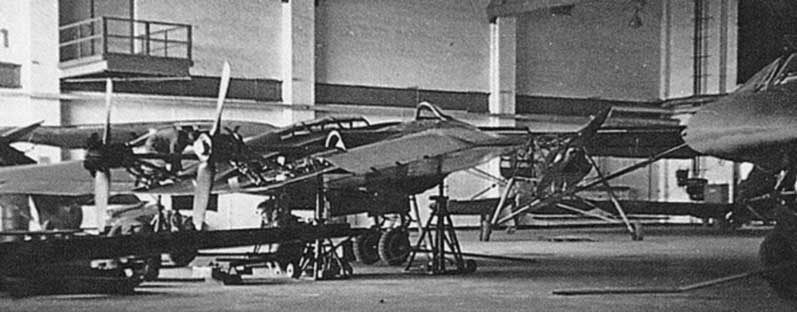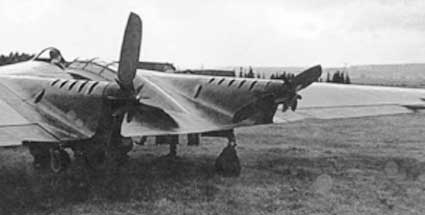

|
In 1942 the Horten Brothers were approached to design a aircraft to be used as a test-bed for the new Schmitt designed Argus As 014 pulse-jet engine, the design of the Ho VII followed the (by now) traditional Horten practice of a flying wing, and can be seen as the logical evolution from the Ho V. The aircraft it's self was composed of a center section (holding the two crew members, undercarriage and engines) made up from welded tubes, with the wings made out of wood and the whole aircraft being covered in plywood. For the first time in a Horten aircraft the undercarriage was fully retractable, the two Argus As 10 piston engines were mounted in the midpoint of the center section driving the pusher props by means of an extension shaft. |

|

|
When the need for a test-bed for the Argus As 014 had passed, the Horten brothers were left with a very good communications aircraft and what more an ideal trainer for the new Horten/Gotha Go 229 flying wing fighter. The first flight of the Ho VII was in May 1944, with Walter Horten at the controls. The aircraft was demonstrated before Reichsmarshal Goering to quell any distrust of the idea of flying wings, this was apparently successful as the Go 229 would go into the "fighter program" of 1945. |
| All together 20 Ho VII were ordered, with the Peschke company of Minden being the main contractors, but only two were finished by May 1945 with a third nearly ready when it fell into Soviets hands. |